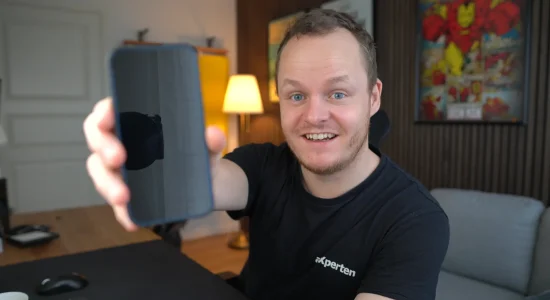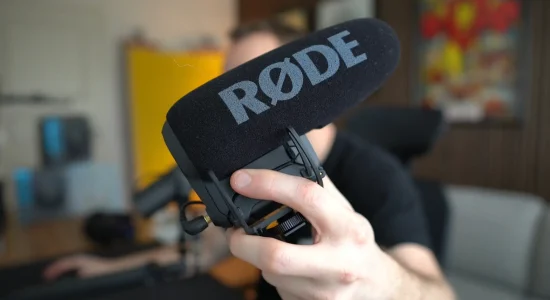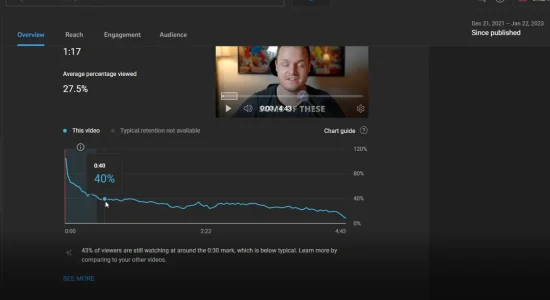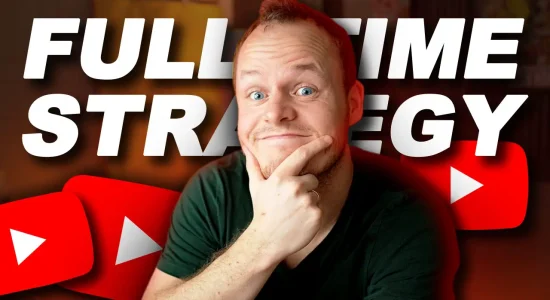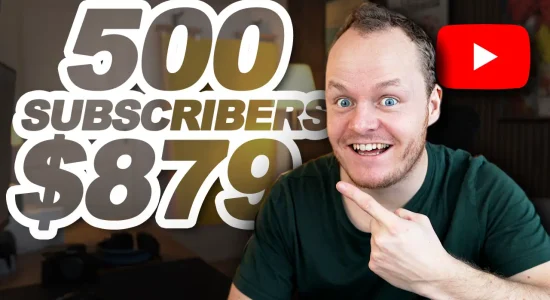When you’re editing a YouTube video, you want to include clips that are copyrighted. YouTube has strict rules for utilizing content that doesn’t belong to you and sometimes will even claim or remove your video if you’re not following those rules.
Fortunately, there are several ways you can edit your content to make original videos that are YouTube-approved while still using copyrighted clips.
Here are 8 steps you can take to avoid copyright when editing a YouTube video:
- Keep the copyrighted content short.
- Remove parts of the copyrighted clips.
- Rearrange the order of the copyrighted clips.
- Change the view of the content.
- Change the speed of the content’s audio.
- Change the music in the content.
- Add effects to the content.
- Add in your own clips throughout the copyrighted content.
In addition to exploring these 8 steps further, this article will briefly touch on the “fair use” legal doctrine and how it plays a part in making YouTube videos that include copyrighted content.
Please be mindful that i am not a lawyer – This is only tips.
You are responsible for your own mistakes 🙂
Keep reading if you want to better understand fair use and the techniques you can use to edit a video while avoiding copyright infringement.
The 8 Steps to Editing a YouTube Video To Avoid Copyright
These 8 steps will provide you with some ideas for editing your YouTube video to your standards without worrying about whether or not it will be claimed or struck for copyright.
Whether you are making YouTube videos for fun or for a side income, these are just some tips to get you started, so feel free to get creative with how you edit your videos with copyrighted material!
1. Keep the Copyrighted Content Short
One guideline that needs to be followed per fair use is that the copyrighted content being included can only constitute a short portion of the entire video. If too much material is edited into your YouTube video, it is easier for the owner to claim their content is being stolen.
You will want to look at how long the original video clip is and estimate how many seconds you need to include in your video for the context to make sense. The goal here is to use only a tiny section in comparison to the length of the entire clip.
Unfortunately, there’s no designated answer in the fair use law to tell you how much of a copyrighted clip can be used without the video being flagged. You’ll have to use your best judgment based on how long the original video is.
2. Remove Parts of the Copyrighted Clips
Removing parts of the clip is a simple way to ensure that the copyrighted material you’re using in your YouTube video is short enough for fair use.
When you’re editing the clip into your video, take a look and see if there are any sections of the video clip that you can cut out. You’ll want to make sure that the clip still makes sense with the cuts, but trimming out the unnecessary parts will help immensely.
Doing this will make the original clip shorter and less susceptible to copyright infringement. It will also eliminate any parts that are not as interesting or relevant as the rest of the clip.
3. Rearrange the Order of the Copyrighted Clips
Rearranging the order of the clips you are using can also help to avoid copyright. As stated in step 1, if you’re using an extended portion of a video, you can cut it down to only the most essential sections.
The crucial sections to include in your video can then be edited into a new order. As long as the context of the clips still makes sense, they can be put into your YouTube video in any way that you would like.
Changing the order of the broken-up copyrighted clips is an easy way to ensure you are not letting the original clip run for too long without being edited.
4. Change the View of the Content
Now that you have gotten the video you are using to a reasonable length, there are a few tricks you can do while editing to ensure the copyrighted material isn’t recognized as infringement.
The first of these tricks is to change the view of the copyrighted content. There are a couple of ways that you can accomplish this.
The first is by flipping the video to face the opposite direction. This alone is not enough to confidently avoid copyright, but it’s an additional measure that can be taken.
You can also try putting a digital zoom on the content. By zooming the content a little bit in or a little bit out from its original place, it should be considered “transformed” by fair use guidelines, which will keep your video from being copyright claimed or struck.
Additionally, if your video is meant to be a lighthearted comedy video, making the content a little too zoomed in or out can significantly add to the comedic effect.
5. Change the Speed of the Content’s Audio
Another editing effect that can be utilized to avoid copyright is changing the audio speed in the copyrighted clip. Doing this even slightly can make a big difference when it comes to keeping the owner from being able to claim your video.
Making the audio just a tiny bit faster or slower will “transform” the content into something new, which will keep it within fair use guidelines. The benefit of doing this is that it’s not drastically noticeable if the audio is sped up or slowed down only a little.
If you want to use the adjusted audio as an additional comedic effect, you can speed it up or slow it down considerably. This is an even better way to make the content brand-new and will not change it so much that it’s not marketable for you.
6. Change the Music in the Content
If the content you edit into your video has music in it, that can be a big copyright flag on YouTube. In this case, not only does the video clip belong to someone else, but the music also most likely belongs to a large record company that will not approve of it being used in the context of a YouTube video.
The best way to solve this problem is by changing the music in the clip. There are a couple of ways this can be done as long as you are willing to get creative.
Put in Royalty-Free Music
The first is to switch out the music for a royalty-free song completely. There are thousands of tracks online that are considered royalty-free that can be used for any project in any situation. These can be found through the YouTube audio library or by looking on a search engine.
All you have to do is find a song similar in style to the music in the clip and edit that song over the video. If you want to shake things up, you can also find a song that does not sound the same as the music in the clip, which can add to your finished video’s comedic or dramatic effect.
Sing the Music Yourself
The second way to change the music in the original clip is by dubbing over it yourself. In this case, you have to record yourself singing the song or humming the melody of the music.
It doesn’t have to sound perfect, as long as you can get the general tone of the song across and you are happy with the finished result. Singing the song yourself is almost always considered transformative enough to avoid copyright issues with YouTube. Of course, this solution usually only applies if you want your video to have a comedic effect.
7. Add Effects to the Content
You can include a lot of different types of effects in your editing to change the copyrighted content enough to fall under fair use guidelines. Here are a few possible ideas:
- Put a unique filter over the clips.
- Remove the audio and add your voiceover to the clips.
- Add text or stickers on top of the clips.
Anything that you can add to make the clip be considered new and transformed content will be enough to avoid copyright claims or strikes from the owner.
8. Add in Your Own Clips Throughout the Copyrighted Content
The final thing you can do to ensure YouTube does not claim your video for copyright is to intersperse the borrowed content with your own original clips.
You could be providing commentary on the content or reacting to it. You could be using the content to back up your own points. You could even break up the content with your facial expressions as you view the clips.
As long as your contributions are changing the original content somehow, the final edited video should be able to avoid copyright with no problem.
What Is Fair Use?
Now that you know the steps you can take to edit your YouTube video to avoid copyright, it’s essential to have a baseline knowledge of the “fair use” legal doctrine. If YouTube decides whether a video is breaking copyright rules, fair use will play a large part in that decision.
The doctrine of fair use states that copyrighted content can be used in videos without permission from the content owner as long as it’s used in a transformative way, its use is kept to a minimum, and the original content retains its integrity and marketability.
Transformative Content
The first guideline for a video with copyrighted content is whether the video uses the copyrighted material in a new way. If someone who is not the owner of the content reuploads the footage without altering it, that wouldn’t fall under fair use and could be subject to copyright penalties.
However, if the copyrighted content is taken and transformed, looked at from a new perspective, or reimagined with editing, it will avoid copyright complaints.
The Style of Content
Another factor that will play a significant role in whether a not a piece of copyrighted content in your video could be flagged is the style of the content—namely, whether it’s factual or fictional.
Video clips of a fictional nature, such as movies and shows, for example, are going to be much more likely to be flagged for copyright infringement than factual clips. They come from the original creator’s ideas instead of content based on fact.
Thankfully, just because a video clip is fictional does not mean it will automatically be claimed as copyrighted content. It just may be more susceptible to being flagged than something nonfictional.
How Much of the Content Is Used
The third fair use guideline is precisely how much of a larger piece of copyrighted content is being put in your video. The goal is to use as little of the material as possible. The more that is used, the more likely it is your video will be claimed.
The less copyrighted content you use in your YouTube video, the safer you are from copyright infringement.
Can the Original Video Still Be Marketed?
Perhaps the most likely reason your video would be claimed for copyright reasons is if the owner of the original clip would lose out on profit. If your edited version of their original content reduces the marketability of that content, they’ll most likely want to ensure they can get their revenue back.
The 8 steps we covered for avoiding copyright give you a range of options but still leave the original clips with their integrity and ability to be marketed.
Final Thoughts
Ultimately, when you are using content in a YouTube video that doesn’t belong to you—whether it’s audio, video, or music—there is always the possibility that the owner could try to claim or strike the video with copyright infringement. However, as long as you change the content under fair use guidelines and utilize some of these editing steps, your YouTube video will remain safe from copyright issues.


